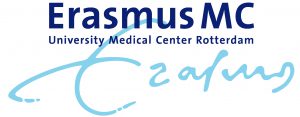ImmUniverse
Client :
Liquid Themes
ImmUniverse

Project summary
Ulcerative colitis is a chronic form of intestinal inflammatory disease that affects the colon (large intestine). Most commonly, adults are first affected aged 30–40 years. It causes ulcers on the colon’s lining and can result in disability and a lower quality of life. Characterised by relapsing and remitting mucosal inflammation, it starts in the rectum and extends to other parts of the colon.
To describe it more medically, ulcerative colitis is associated with damage to the mucosal barrier, allowing the luminal microflora to trigger a sustained and uninhibited inflammatory response. Among the inflammatory cells, T helper cells perpetuate enterocyte apoptosis and inhibit mucosal healing. IL-13, produced by NK T cells, also contributes to epithelial injury. Additionally, innate lymphoid cells, homeostatic at steady state, contribute to the cytokine production, perpetuating inflammation. Mucosal injury and damage is also associated with dysbiosis, which is thought to contribute to the inflammatory cascade.
An increased understanding of the mucosal immune system has led to an expanding array of therapies. The aim of therapy is to induce and maintain clinical and endoscopic remission. Aminosalicylates are the main choice of treatment for a mild to moderate form of the disease, topical and systemic steroids can be used to treat ulcerative colitis flares, while immunosuppressants and biological drugs are used in moderate to severe disease. Colectomy is needed in up to 15% of patients. The annual direct and indirect costs related to ulcerative colitis are estimated to be as high as €12.5–29.1 billion in Europe and US$8.1–14.9 billion in the USA.
However, the number of drugs modulating different disease pathways is expected to expand in the near future. There are at least 27 new drugs for ulcerative colitis with either recently completed or active trials. Nevertheless, the optimum level of symptom control and remission that is needed to prevent long-term complications remains to be fully understood.
Impact
Currently, different scores are available to measure disease activity in each immune-mediated inflammatory disease. These scores are based on clinical, laboratory, and/or imaging measures. Although they are frequently used in clinical practice, they have important limitations. Disease activity scores are often based on unspecific and sometimes subjective variables that significantly increase their inter- and intra-observer variability, clearly reducing their accuracy and, consequently, affecting disease monitoring. Objective molecular scores will indicate adequate disease control and may serve as early markers for relapse, therapy escalation and tailored treatments. The resulting improvement of patient management will lead to increased patient well-being and reduced net health care costs.
Hence the improvements in the prediction of disease progression and therapy response will not only be of great benefit to the patient but will also significantly reduce the socio-economic burden of these diseases.
More detailed information
Principal Investigator:
Dr. Dirk-Jan Hijnen
Role Erasmus MC:
Partner
Department:
Dermatology
Project website:
Not available
Funding Agency:
Innovative Medicines Initiative (IMI)



